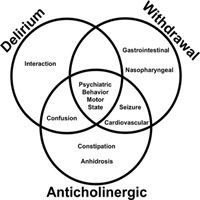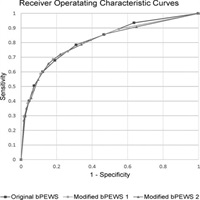Stories Category: PICU

Validation of the Vasoactive-Inotropic Score in Pediatric Sepsis
Secondary retrospective analysis of a single-center sepsis registry. Vasoactive-Inotropic Score in pediatric sepsis patients is independently associated with important clinically relevant outcomes including ICU length of... read more

SOFA Effective Pediatric Version
An age-adjusted version of the Sequential Organ Failure Assessment score for sepsis has been found to be at least as good, if not better than, other pediatric organ dysfunction scores at predicting in-hospital mortality.... read more

Can Electronic Alerts Help Identify Sepsis in Sick Children?
A two-step electronic alert system successfully reduced missed sepsis diagnoses in children by 76 percent. The new pediatric protocol, which incorporates the use of vital signs, risk factors, and a clinician's judgment,... read more

International Survey of Critically Ill Children with Acute Neurological Insults
Margaret Parker, MD, MCCM, speaks with Ericka L. Fink, MD, MS, about the PANGEA study (Prevalence of Acute Critical Neurological Disease in Children: A Global Epidemiological Assessment), published in the April 2017 issue... read more

The Science and Art of Pediatric Critical Care Nutrition
Malnutrition is prevalent in the pediatric ICU population, and is associated with worse outcomes. Nutrition support teams, dedicated dietitians, and educational programs facilitate surveillance for existing malnutrition and... read more
Developing an ICU Diary in the Pediatric ICU
Todd Fraser, MD, speaks with Jenny Tcharmtchi, BSN, RN, CCRN, about the article, "Family Experience in the PICU," published in Critical Connections, the Society of Critical Care Medicine's newsletter. Ms. Tcharmtchi... read more

Guidelines for the Provision and Assessment of Nutrition Support Therapy in the Pediatric Critically Ill Patient
This document represents the first collaboration between two organizations, American Society of Parenteral and Enteral Nutrition and the Society of Critical Care Medicine, to describe best practices in nutrition therapy in... read more

PICU Repeated and Unplanned Readmissions Within 1 Year
Unplanned readmissions occurred in a sizable minority of PICU patients. Patients with complex chronic conditions and particular conditions were at much higher risk for readmission. In this multi-institutional study, we found... read more

An Airway Risk Assessment Score for Unplanned Extubation in PICU
Higher Risk Assessment Scores are associated with occurrence rates of unplanned extubation. As a result of a workshop to identify common causes of unplanned extubation, Children's Healthcare of Atlanta developed a scoring... read more

The Air is Everywhere
A 12-year-old male with a history of mild persistent asthma presented to the Emergency Department (ED) with acute onset of chest pain and a "crackling" feeling along his sternum. Two days prior he was seen by his... read more

Differentiating Delirium From Sedative/Hypnotic-Related Iatrogenic Withdrawal Syndrome
The main objectives of this study is to identify available assessment tools for sedative/hypnotic iatrogenic withdrawal syndrome and delirium in PICU patients, the evidence supporting their use, and describe areas of overlap... read more

Integration of Single-Center Data-Driven Vital Sign Parameters into a Modified Pediatric Early Warning System
Pediatric early warning systems using expert-derived vital sign parameters demonstrate limited sensitivity and specificity in identifying deterioration. We hypothesized that modified tools using data-driven vital sign parameters... read more

Diagnostic Value of Procalcitonin on Early Postoperative Infection After Pediatric Cardiac Surgery
Procalcitonin was more accurate than C-reactive protein and WBC to predict early postoperative infection, but the diagnostic properties of procalcitonin could not be observed during the first 3 postoperative days due to the... read more

Clinical Practice Parameters for Hemodynamic Support of Pediatric and Neonatal Septic Shock
The American College of Critical Care Medicine provided 2002 and 2007 guidelines for hemodynamic support of newborn and pediatric septic shock. Provide the 2014 update of the 2007 American College of Critical Care Medicine... read more




